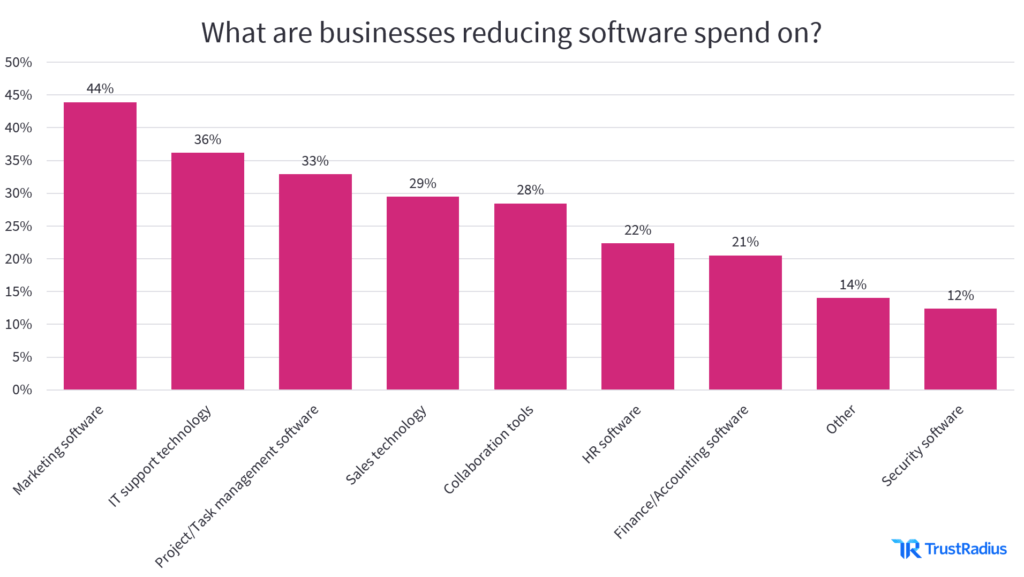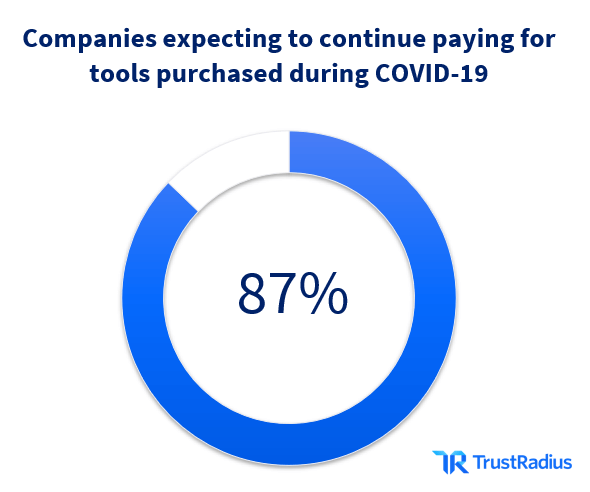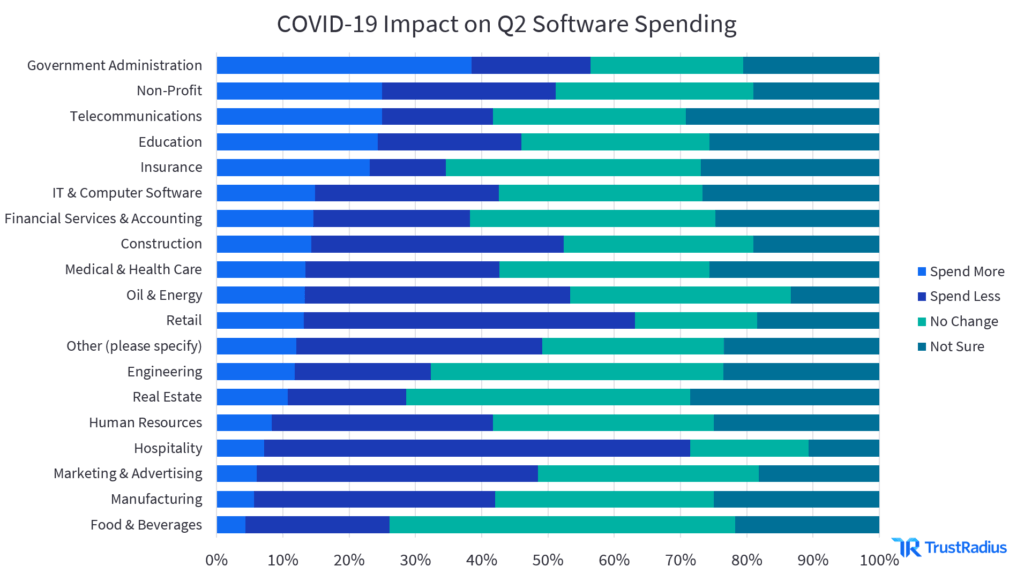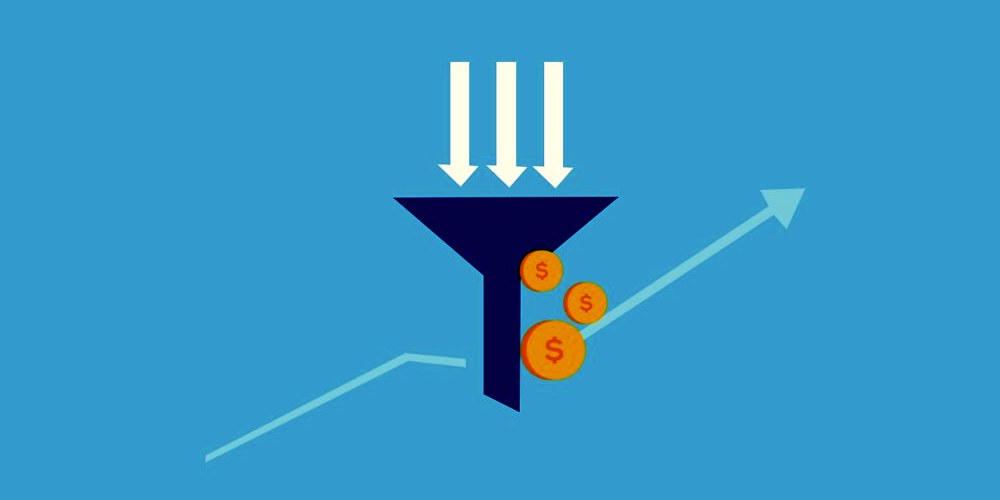Covid-19 has forced organizations to adopt a new business pattern. It has challenged the ways organizations function and generate business results. In the upcoming months, the market would also see a new spending pattern by these organizations.
Most of these B2B organizations agree COVID-19 would make them cut or just maintain the spending, instead of accelerating the spending process. But there are mixed responses!!!
For example, 30% do not feel there would be any impact on spending due to COVID-19, while 31% stated there would be less spending, 15% stating they would be spending more and 24% of them unsure of the same. ~marketingprofs.com.
The overall mood is not to take risk during these unprecedented times.
Stephen Minton, program vice-president in the IDC’s customer insights, stated:
“Inevitably a major economic recession, in Q2 especially, will translate into some big short-term reductions in IT spending by those companies and industries that are directly impacted.”
The firm also predicted there would be reduced spending in the Information Technology services, a decline of 2.6%, and also on the software, a decline of 1.9%. ~siliconangle.com
Companies have been carefully analyzing and reducing the b2b enterprise software spending to overcome the fallout of COVID-19.
In the below graph, you can see where businesses/enterprises are cutting down their spending:
 Source: trustradius.com
Source: trustradius.com
As you can see, 44% of the respondents stated they are reducing the spending on marketing software, followed by 36% stating they are reducing the spending on IT support technology.
The worldwide IT spending is predicted to be around $3.4 Trillion in 2020, a drastic decline of 8% from the year 2019. ~gartner.com
Table of Contents
How WFH (Work from home) is directing the IT spending:
Employees in the IT companies are significantly working from home. This has also pushed many companies to increase the tech spending on the security software. As per a report, the rate of enterprise spending on the security software increased to 41%. It thus proves although there are apprehensions, companies are not turning back when it comes to the security of the data of the organization. ~trustradius.com
Many of these enterprises are cutting down the spending on the traditional technologies such as IT services, personal computers, storage infrastructure, and others. The organizations are looking to revamp their spending pattern. They are spending on technologies and security that are absolutely necessary and reducing the spending on others which they would not benefit in the short-term.
John-David Lovelock, the research vice-president at Gartner stated:
“CIOs have moved into emergency cost optimization.”
It means a lot of investment would be minimized, and the operations would be prioritized to keep the businesses running. The organizations are looking for the survival mode and ways to sustain in the market for the time-being.
Another survey found, b2b enterprise companies that purchased the tool during COVID-19 would continue to pay after the crisis.

And this was found to be nearly 87%.
A staggering number, isn’t it?
COVID-19 and Benefit to Cloud Services, Less Prioritization to Datacenter System:
In another case, it has been found that the crisis would benefit the cloud service providers. Gartner has also predicted that spending on public cloud services will grow to 19% while the cloud based conferencing will shoot to 24%. ~techgenix.com
Thus we can see, with every closed door, there is a window of opportunity
Gartner also predicted there would be reduced spending on the data center systems, and devices. The global research and the advisory firm heavily relies on the analysis of sales, w.r.t many vendors across a complete range of the services and the IT products. The methodology it uses, includes the primary as well as the secondary research.
Priority to the Communication Technologies:
The communication technologies such as the WebEx, Zoom, and Skype would see an increase in demand further. Zoom has been found to be useful for businesses that have employees outside the company network. It has the best audio and video quality for the right communication. As it has the free version also available, it is good for the small businesses.
This way, firms would cut spending on one service, while delaying other projects, and reduce the costs in other ways.
As per a report by the Enterprise Technology Research firm, the spending on the IT technology infrastructure is likely to decline by 5% in 2020. ~siliconangle.com
COVID-19 Impact on Different Industries:
The Covid-19 crisis has impacted various sectors on a different level. As you can see in the below graph, construction, retail, and the hospitality industry have been worst hit:
Information Technology (IT) Spending by Industry:

While the rest of the sectors, such as the government, non-profit, telecommunications, education, insurance are likely to see more spending.
The food and beverage industry is likely to see no change in spending.
Technology Companies and Customer Service:
An increasing number of technology companies are working on the advanced technologies to provide better customer service. The sectors such as banking and healthcare heavily rely on the latest technology to provide a streamlined and effective customer service.
This is where IT solution comes into the picture. The technology companies are spending more on R&D to provide the service or product where different organizations can enhance the productivity with better customer service.
Conclusion:
We are entering a new era, where the global spending on IT looks different before and after the COVID-19 lockdown. With unexpected scenarios, emerging from the crisis, there has been an increase in opportunities in other areas that has to be looked for.
B2B companies have to identify these opportunities and increase the spending on the same, to gain the right business benefits.





